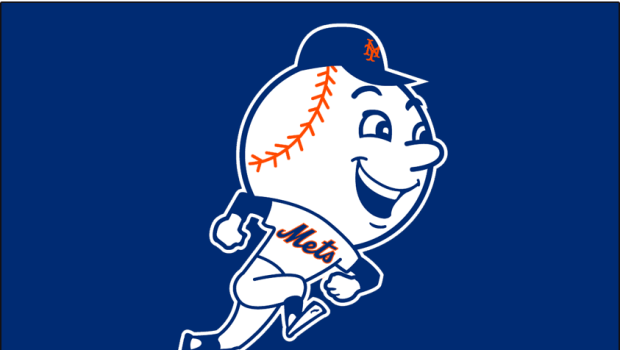
AMAZIN’ AGAIN: Meet the Mets’ Writer/Author Greg Prince at Little City Books — MONDAY
Another Subway Series is in the books, churning up a fair amount of passion about New York’s baseball teams.
When it comes to the Mets, one of the most passionate people out there is writer Greg Prince—a fan who has turned his devotion to the “Amazins” into a blog—”Faith and Fear in Flushing“—as well as a book covering last year’s World Series run—Amazin’ Again.
Prince will be on hand at Little City Books (100 Bloomfield Street) this Monday, August 8, to discuss the book, the blog and all things Flushing.
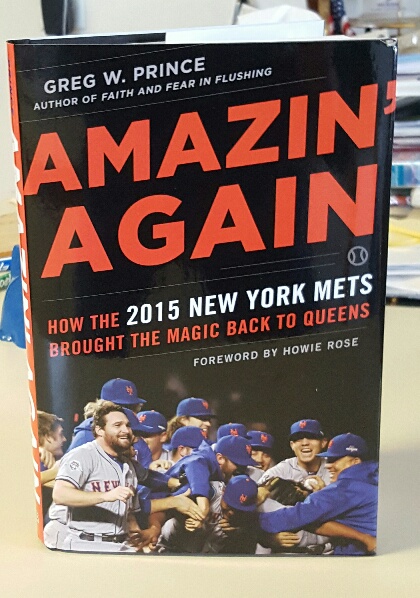
We had a chance to chat with Prince about what it means to be a fan, a writer, and a fan who writes…
hMAG: How long have you been a Mets Fan, and to what can you attribute your intense devotion to the team?
Greg Prince: I’ve been a Mets fan since the summer of 1969, when I was six years old, began waking up to what was going on around me and found words like Amazin’ and Miracle being thrown around the New York Metropolitan Area with great abandon. Within a couple of months, this team with which I felt an immediate kinship was the champion of the world. You can call me the original frontrunner if you like, except I was back for more the next (non-championship) season and every (non-championship) season since.
Perhaps the intense devotion is a personality trait. I tend to get attached to concepts and things and dig in from there. I’m very much a 1.0 kind of guy. I don’t seek the upgrades. The Mets were my team 47 years ago, they’re my team now, they’ve been my team every step in between. It’s just the way I operate.
hMAG: Mets fandom can’t be easy… what keeps you going during the lean times?
GP: It wouldn’t occur to me not to be a Mets fan, so in a sense I have no choice in the matter. I just keep going.
Although, as 2015 reminded me, it’s a great deal more fun to have a team contending for a playoff spot and participating in the postseason, there’s always something to keep me engaged. When a new player is acquired or called up, I make a great ceremony of adding him to the all-time roster I keep. If a Met returns to the team as a “Recidivist Met,” à la Jose Reyes or Jonathon Niese, I have another list I keep. I track which scores are the most frequent and infrequent the Mets win by (the Mets have won 288 regular-season and four postseason games by a margin of 3-2; until last year, when they did it on consecutive nights in Colorado, they had never won 14-9). This kind of stuff not only occupies my mind when a pennant race doesn’t, it also gives me the kernels of inspiration for something to write about when last night’s game isn’t so inspiring.
In the modern era, the best thing about being a Mets fan is the sense of community. On the Saturday night in April that SNY’s Gary Cohen (as complete a baseball voice as has ever been, in my estimation) was kind enough to mention my book over the air, I was overwhelmed by texts and social media mentions letting me know it had happened. It not only speaks to the thoughtfulness of a lot of people who only know me through my writing or my tweets, it tells me a ton of people spend their Saturday nights watching the Mets, just like I do.
 hMAG: You’re not a beat writer—you’re a fan first and foremost. It must tremendously exciting to become so intimately involved with the Mets franchise on so many levels. What has been the personal highlight since taking on the blog and now the book?
hMAG: You’re not a beat writer—you’re a fan first and foremost. It must tremendously exciting to become so intimately involved with the Mets franchise on so many levels. What has been the personal highlight since taking on the blog and now the book?
GP: Aside from the chance to talk about my favorite team at Little City Books?
In the broad sense, it’s discovering that what I write matters to people who share this bond with me. When Johan Santana pitched the first no-hitter in franchise history in 2012, I raced to the computer to capture the moment and the emotion. Not a few readers told me they didn’t feel this Met milestone was official until they read about it on Faith and Fear. I suppose it’s the same instinct I developed that had me saving every newspaper in sight whenever the Mets would clinch something in the pre-blog past (I still have all those papers).
Conversely, in September of that same season, which had gone downhill as all seasons in the early Citi Field years tended to do, I wrote a relatively intricate recap of a Sunday afternoon loss in Milwaukee, and one reader let me know he was incredibly impressed that I could continue to make terrible games seem interesting. “I would just say it sucked,” was more or less his take.
As for an “oh wow” type of moment, I had the honor of presenting an award a couple of winters ago to Ed Charles, the third baseman and “poet laureate” of the 1969 Mets. This is Met royalty we’re talking about, not only representing one of the great baseball stories of the 20th century, but somebody whose childhood was portrayed in the Jackie Robinson biopic 42. He grew up idolizing Jackie, signed a minor league contract in the early ’50s, was kept from the majors for a decade by de facto segregation, yet persevered until in literally his final act as a big leaguer he became a world champion. This is ‘The Glider’ we’re talking about. In every aftermath photo from the Mets winning the World Series, you see a catcher and a pitcher — Jerry Grote and Jerry Koosman — embracing, as No. 5 rushes toward them to join in. No. 5 is Ed Charles. So if I’m presenting an award to Ed Charles, I’m going to do the best job I can.
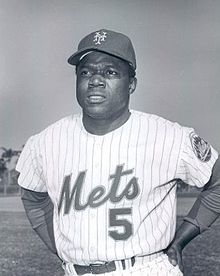 A few days after the event, I got a call from Ed. He told me how much he liked what I had written about him and asked me to send him a copy. “There were things about my career I didn’t know until you told me about them,” he said. So that was Amazin’. Every now and then a former player or the family member of a player who has passed on will come across something I’ve written and get in touch, and that’s very gratifying as well.
A few days after the event, I got a call from Ed. He told me how much he liked what I had written about him and asked me to send him a copy. “There were things about my career I didn’t know until you told me about them,” he said. So that was Amazin’. Every now and then a former player or the family member of a player who has passed on will come across something I’ve written and get in touch, and that’s very gratifying as well.
I’ll also mention that when my father died this year, I was stunned by the depth of condolences I received from our readers. My dad wasn’t really much of a baseball fan most of his 87½ years, but when he took ill in 2015, watching the Mets together down the stretch and in the fall became a big, galvanizing deal for us, and I wrote about it now and then. When I reported the inevitable end of the story in July, I had a lot of people thoughtfully telling me they felt they knew him because of what I had written. For me it was a very comforting virtual version of sitting shiva.
hMAG: How does one develop a voice that resonates amidst the cacophony of sports writing?
GP: Keep an open mind, keep writing, commit to what you’re writing in an honest fashion, reopen your mind the next day, and repeat the process. I don’t know if that develops a voice, but I’ve found it creates resonant copy.
Also, there is no angle that is inappropriate if you believe in it. Everything reminds me of the Mets, ergo the Mets remind me of everything. Everything seems to trickle into what I write about the Mets. For example, there is a small cadre of Faith and Fear readers that gets excited every July 4 because its members anticipate I will somehow bring my favorite movie musical, 1776, into the conversation organically. Incidentally, I’m still annoyed by the final run the Mets scored in a Coors Field loss on July 4, 2007, because it meant they went down 17-7, thus robbing me of the headline, “The Spirit of 17-6.”
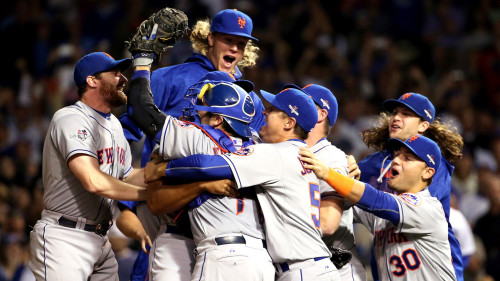
hMAG: Without spoiling the plot of Amazin’ Again, what was it about the 2015 Mets season that made it so special?
GP: The trajectory of the season set up both interest and drama. This is a team that won eleven in a row in April, convincing its followers that this could be the year everything wasn’t going to be awful. Having that in our back pocket made the ensuing two months, in which half the lineup was injured and their replacements weren’t hitting a proverbial lick, all the more urgent. Being disgusted with the Mets had a purpose beyond reflex now. Once the defining trade for Yoenis Cespedes was made, we were poised to take seriously the outcome…and the outcome was spectacular.
This was a very important pennant in the life of this fan base. I grew up with the Miracle Mets and You Gotta Believe, 1969 and 1973. I experienced the ball through Buckner’s legs. I knew how great rooting for this team could be. If they were under a certain age, all that Mets fans in 2015 knew from their experience was heartache, disappointment, frustration, little to nothing good. 2015 opened their eyes to possibilities I think a lot of them never imagined. It was fantastic to watch the Mets’ surge through their eyes in a sense and to maybe help put it in a larger historical perspective for them.
I’d like to believe my book will mean to the six-year-old of 2015 what several post-1969 Mets books meant to me. I wrote it for whoever lived through and understood the season, of course, but also for the kid who in a couple of years will want to discern the whole story that he got only bits and pieces of the first time around, or perhaps was too young to remember at all.
hMAG: We noticed a lot of brand new Mets hats on the streets of Hoboken last October. What is your advice to the neophyte fan?
GP: Congratulations, you made a fine choice. I look forward to you reading my blog, buying my books and running into me at Citi Field. We are more than our wins and our losses, so stick around even if this October isn’t particularly vibrant. Welcome to the family of Met, my friend.
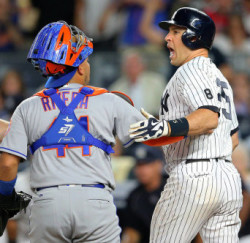
hMAG: Getting creative with the hypotheticals—is there any possible scenario where you could ever see yourself rooting for the Yankees? Ever?
GP: A baseball team comprised of hostile extraterrestrial invaders, terrorists who hate us for our freedoms and general bad apple fascists arrives on our shores to challenge the New York Yankees to determine the fate of the United States of America (that would be who they’d ask for because they’re a bunch of tourists who don’t know any better). If the Yankees win, life goes on per usual. If the all-star awfuls prevail, then we’re all screwed. I’d really have to think about it then.
I’d probably find myself rooting for whichever team didn’t sign Chase Utley.

 Previous Article
Previous Article Next Article
Next Article Hudson County Reporting 234 Cases of Coronavirus, Over 3,500 Statewide — $2 Trillion Federal Stimulus Package Announced
Hudson County Reporting 234 Cases of Coronavirus, Over 3,500 Statewide — $2 Trillion Federal Stimulus Package Announced 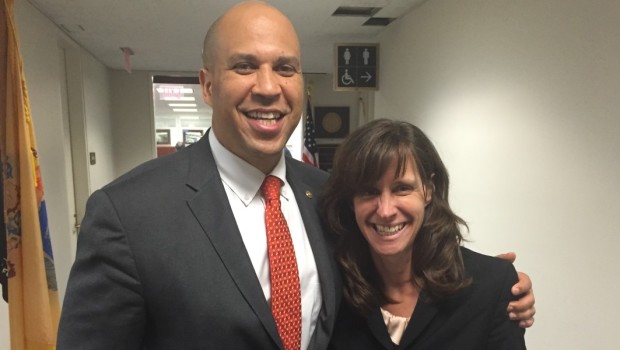 Hoboken’s Mayor Zimmer Meets With Congress for National Infrastructure Advocacy Week
Hoboken’s Mayor Zimmer Meets With Congress for National Infrastructure Advocacy Week  Disney Singalong Fundraiser at Hoboken High School — FRIDAY
Disney Singalong Fundraiser at Hoboken High School — FRIDAY  FEATURED PROPERTY: 376 Ridgewood Ave, Glen Ridge, NJ — Stunning 6BR/4.5BA Colonial | $1,999,999
FEATURED PROPERTY: 376 Ridgewood Ave, Glen Ridge, NJ — Stunning 6BR/4.5BA Colonial | $1,999,999  New Jersey Symphony Orchestra at Pier A — TONIGHT
New Jersey Symphony Orchestra at Pier A — TONIGHT  CITY CHALLENGE OBSTACLE RACE: Mayor Zimmer to Participate in Competition, Raising Awareness for Big Brothers Big Sisters
CITY CHALLENGE OBSTACLE RACE: Mayor Zimmer to Participate in Competition, Raising Awareness for Big Brothers Big Sisters  FULOP: Jersey City to “Gradually Re-Open Some of the Larger Parks”
FULOP: Jersey City to “Gradually Re-Open Some of the Larger Parks”  3rd ANNUAL HOBOKEN LAST WALTZ: ‘The Band’ Gets Back Together — FRI & SAT @ MAXWELL’S
3rd ANNUAL HOBOKEN LAST WALTZ: ‘The Band’ Gets Back Together — FRI & SAT @ MAXWELL’S